One of the best things about social media in the watch world is being able to discover new brands, and new watchmakers. When I discovered independent watchmaker Ondřej Berkus’ account @hodinkyberkus, I was immediately struck by the watches he creates, their incredible colours, textures and materials, as well as a refreshing candour.
Every single piece is unique, created especially for the client, and it isn’t uncommon to find unusual materials being used such as meteorite, Damascus steel, and tantalum.
Ondřej Berkus is a self-taught watchmaker from the Czech Republic, and I was lucky to be able to catch up with him recently to learn more about his journey into watchmaking and his watchmaking philosophies.
(A huge shout out to @jirivratislav for the incredible watch photography!)
In Conversation with Ondřej Berkus
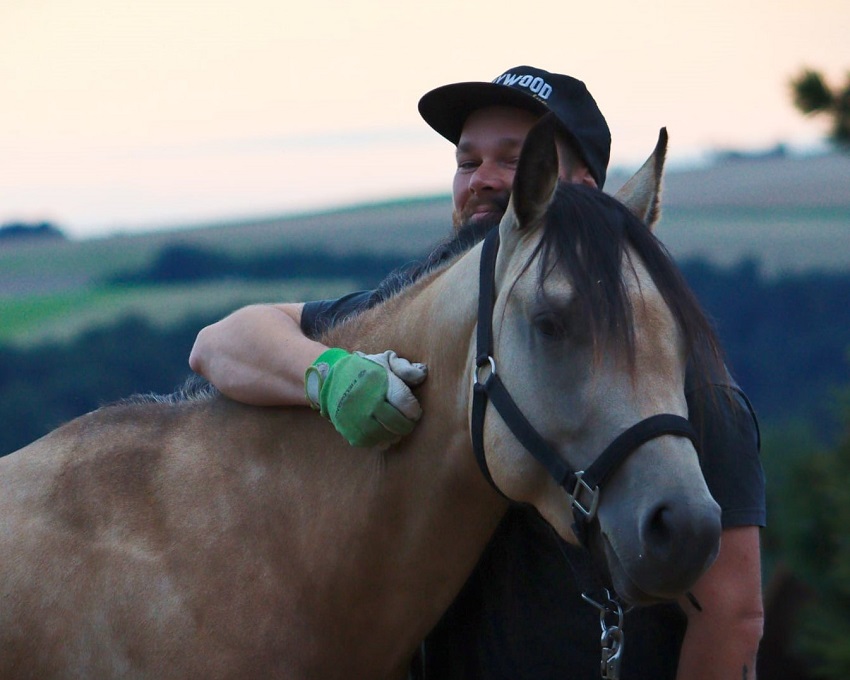
Ondřej Berkus
WA: Your journey into becoming a watchmaker is quite different to most people, so to start with, why don’t you give us some insight into your career to date and how you became a watchmaker?
OB: Well, I’ve only been making watches for maybe 12 years, but time flies when you’re having fun! It actually started with us drinking – all the best ideas do, making knives, having horses, making watches… I wanted to have a watch, but not something I would see other people wearing at the same time. When I looked into it, it wasn’t something I could afford. At this point, I had been making knives for about 6 years, so my dad said “well, why don’t you make a watch? How hard can it be?” It turns out… very hard! I started with making cases, making dials, making hands, and slowly adding stuff.
The problem was I started selling the watches before I could make them. I sold some bad watches and made some people angry, it’s all solved now, but I had to make some changes. I had the idea of trying to make complicated watches, specifically a tourbillon and a perpetual calendar, to show that I am a capable watchmaker. These took me about 2 years to complete, and when I made these, I made everything on my own, manually.
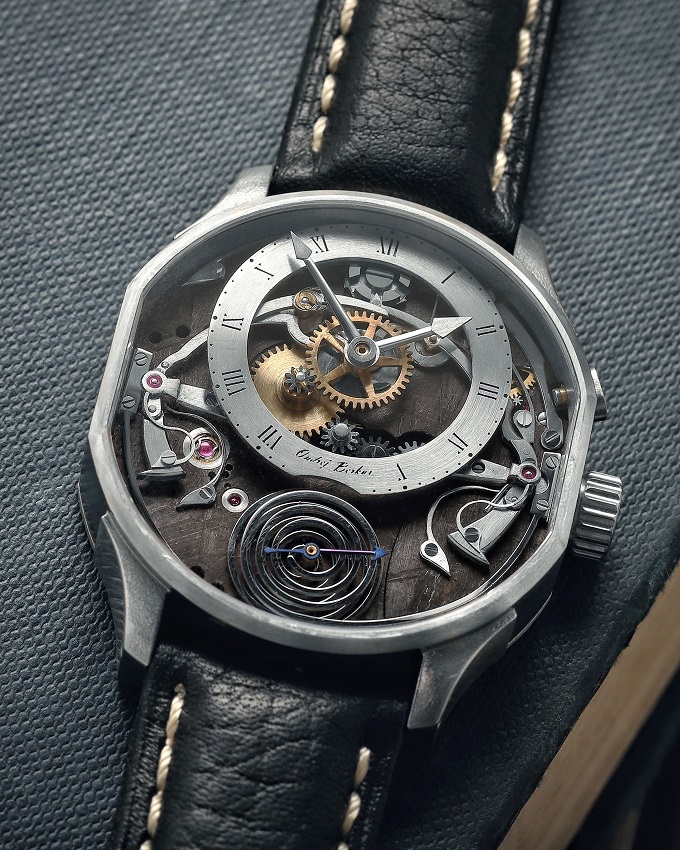
'Sonnerie au passage' watch by Ondřej Berkus
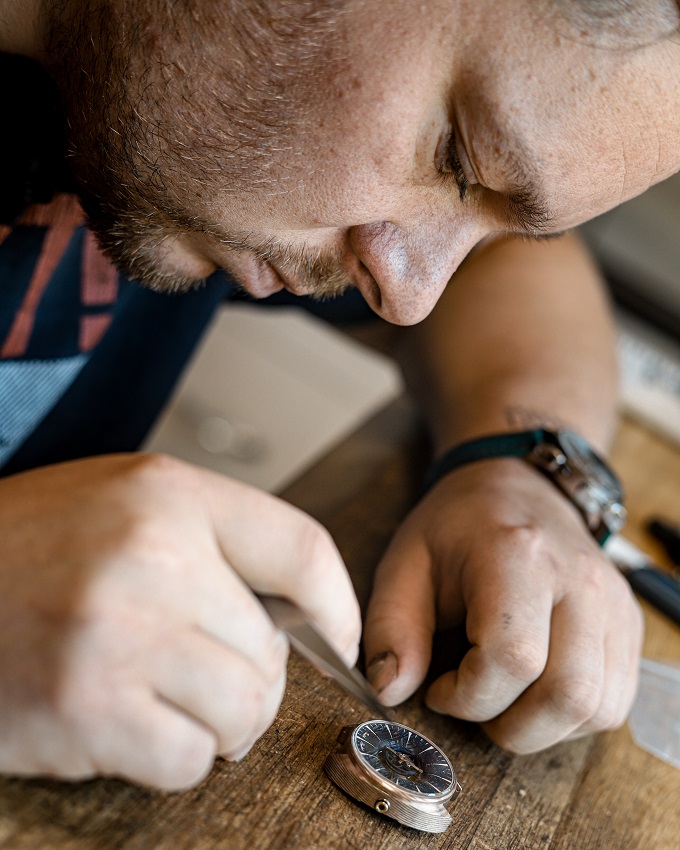
Ondřej Berkus
Actually, the perpetual calendar is a funny story. I made it on a dare! One client visited me, and he saw the doodle of the perpetual on my desk. He asked about it, and I explained it was a perpetual calendar and told him how it worked. He said to me “I’m going to bet you to make it. If you make it, I’ll pay for it”. So, I made it, and won! Going from making cases, and dials, and suddenly jumping to a perpetual calendar was fun!
Anyway, now, I have a friend with a precise laser who helps me with the patterns that I use to drill the placements of the gears. I draw watches in AutoCAD, send the drawings to him, and he makes a template for me that I copy in my materials. From then on, it’s still manual watchmaking just like 100 years ago – but with electricity!
After making the tourbillon and perpetual calendar, I knew this is something I want to do. It was interesting – the complications and the challenges are things I want to do, and it works! I get up, I go to the workshop, I have fun, and then I go out and have fun with my horses, and then I go to sleep. It’s simple, and I’m happy.
All you see now in the pictures and the watches, that’s all learned – I wouldn’t say I am talented. My only talent is that I don’t give up when I fuck up. If you want to pursue anything, you don’t give up, and it will all come together eventually. It took me 18 years, but here we are right now.
WA: Where you said you started out crafting knives, is there anything else in particular that drove you towards watches?
OB: A knife is not alive – it’s pretty, but it’s just a thing. The watch is alive.
There’s a limited number of things that can go wrong in a knife when it doesn’t work, and there’s an infinite number of things that can go wrong with a watch. Each watch for me is a riddle, for each watch I design I have to think about what I’m going to do, and how I’m going to do it. I can try it one way, and if it doesn’t work, I have to find another way.
It just keeps you in. It’s the same with collecting watches, because once you stick your toe in it doesn’t let you go.
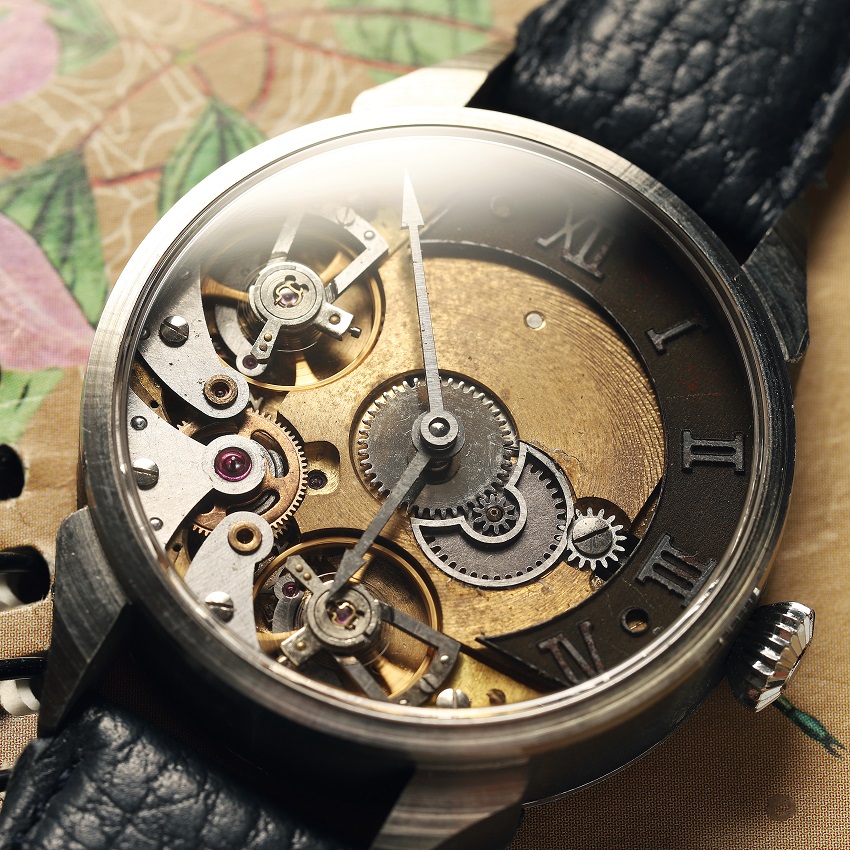
An unfinished prototype of a double balance watch
WA: It’s falling down the rabbit hole, right?
OB: Exactly. And making watches, especially making every part of the watch by hand yourself, it’s like a rabbit hole lined with heroin. It doesn’t let you go.
I don’t want to do anything else. I can’t imagine doing anything else. I’m just addicted to this, and to my horses obviously, but I can’t imagine doing anything else for a job or for a living. That’s what drove me, and what keeps driving me.
WA: So given you are self-taught, and you’re in the Czech Republic, I imagine that must have been super difficult compared to someone who is self-taught in say Switzerland or Germany – with less of a support network around in the Czech Republic to help and learn from. How did you find that?
OB: One big problem is getting the right tools from the right suppliers, shipping from Switzerland. I have started using the right tools this year, after spending a few days in April with Philippe Narbel – he is an awesome human being, and he and his wife were so welcoming! He showed me all the tools, where to buy them, and explained to me how I can improve my finishing. In the long run, for the quality and finishing of my watches, I think it’s going to be game changing, so I really want to thank him. I owe him bigtime, and he deserves all the attention he can get!
Before this, I pretty much improvised everything – I made my own tools, made this and that, I had to adapt everything.
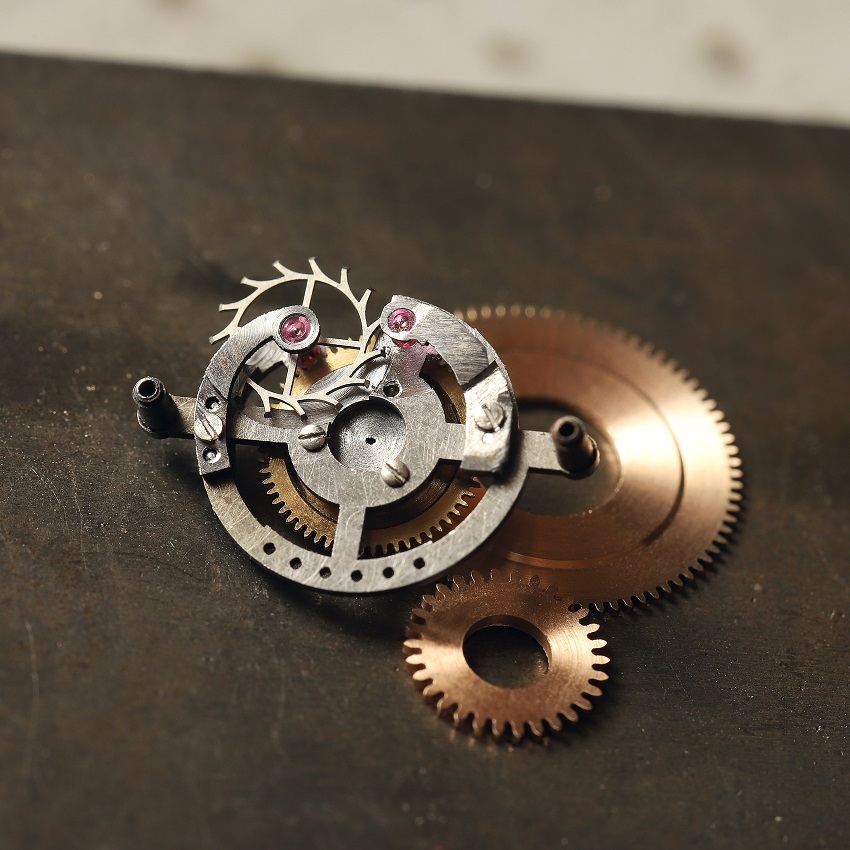

But the advantage of being outside Switzerland is that I wasn’t sucked into the industry, and I could go my own way, which I hope shows in my designs and my technical solution.
What I saw in Switzerland was eye-opening. Some of the Swiss I met won’t do something if someone tells them it’s not traditional, whereas I my response is more “Yeah? Wanna bet?”.
There are a lot of independent watchmakers in the world but using the word “independent” these days seems as much of a joke to me as using “hand-made”, “hand-crafted”, “heritage”. There are some people who have my undying respect like Luca Soprana, Ludovic Rohrer, Masahiro Kikuno… they are the real deal.
But most draw a watch, have somebody to AutoCAD it for them, someone who machines the parts on the CNC machines, then they finish the stuff themselves or they have a company that finishes it for them. The person then assembles the watch, and everyone says, “oh he’s a genius!”.
No. Who are these people independent of – their mama!? People say to me “oh you make your own parts, isn’t that exhausting?” and of course it is, but it’s my watch. When you have my watch in your hands, or on your wrist, it’s my watch. It’s not outsourced.
WA: From your watches, it’s clear you aren’t one to turn down a challenge, like with your perpetual calendar. You’ve made time only, tourbillons, and sonneries too. Your first tourbillon and perpetual calendar watches were the first to be made in the Czech Republic, which is pretty cool! How did you approach taking on such complicated watches for your clients, and what were the biggest challenges?
OB: The biggest challenge is that I had no idea what I was doing! No training, no skills, so I learned as I went.
The perpetual is about the third of fourth version of each part in that watch. I made a part, and if it didn’t work or if it was suboptimal, I remade it. I kept remaking parts until the watch was done. These days it is a lot easier with AutoCAD and the machining, so it usually works out on the first go.
If you have no idea what you’re doing, you just have to embrace that. It’s not going to be perfect, nobody is born perfect except for maybe sharks and horses, so you approach it as a learning experience.
You make a part, it doesn’t work, you go outside and shout some bad words, then come back and make the part again. Just keep at it.


WA: I discovered your work via your Instagram account @hodinkyberkus. I was struck by both your candour, and the variety of your work, and found it really refreshing. There is no shortage of interesting textures and engravings, and uncommon materials being used such as Damascus steel, tantalum and meteorite, as well as colour finishing with even heat-blued meteorite! This is not the kind of things you see regularly, so how would you describe your philosophies on watchmaking?
OB: The crazy materials are from my experiences in knife making – when making knives, there’s a blade, there’s a handle, it opens, it closes, and that’s it. There’s no mechanical marvel, so to make it attractive you use attractive materials. Different Damascus steel, different mother of pearls, different ivories like mammoth, or fossil walrus – crazy materials.
With watches, when you get past the point of being able to make the case, I started exploring making them in the different kinds of materials I had used before for knives. I’ve learned over the years not to say no to myself, so if I come up with an idea, I write it down on the basis there are no such thing as bad ideas. There can be disastrous ideas, sometimes, but no bad ideas!
For the first tantalum watch I made, when the client asked about it, I started reading up on tantalum and everyone said that it is a bitch to work with. But I thought that the people saying this are used to working with brass and steel, so their view might not be as objective, and they haven’t worked with such a variety of materials. So I gave it a try, and figured if it didn’t work we would try something else.
But it worked out, I think tantalum is not as difficult to work with as you hear. These types of materials are challenging until you figure out how to work with them. Once you figure out the speeds to machine them, what files to use, it gets easier.
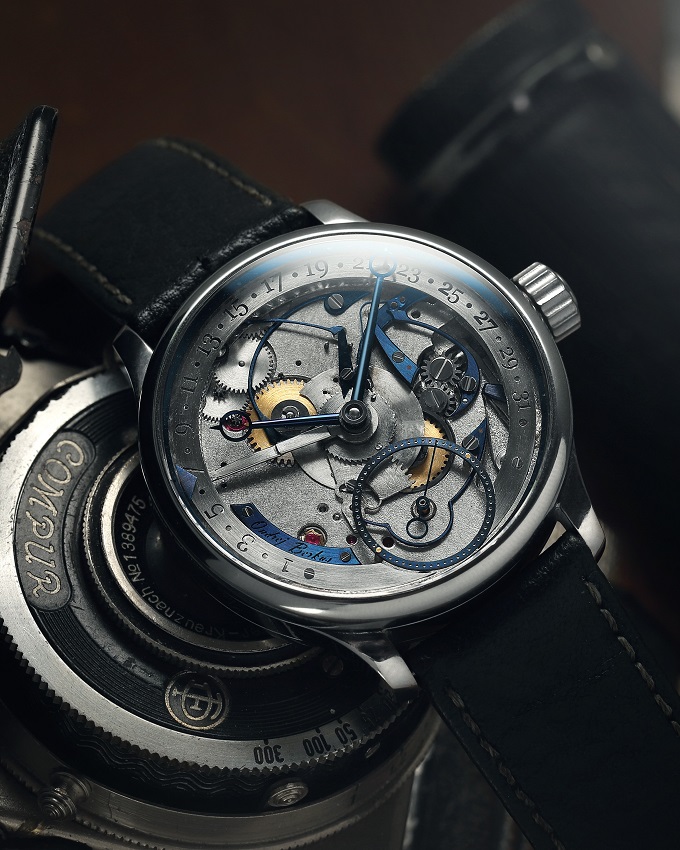
Ondřej Berkus watch in tantalum
I’m not going to say it’s easy because it’s still micromechanics and micromachining, and you have to be careful. I write notes for myself in a book for each material – watch out for this, watch out for that, use this tool etc, it’s like my own personal cookbook.
I’m like a broken record, but you have to keep at it.
WA: My understanding is that every piece you make is designed by you, taking input from the client such as things they would like to see, or things you have done before that they liked. You then design something especially for them. Could you talk me through this?
OB: You are absolutely right, I have the best customer base I could ever ask for, and they trust me to do the design for them. We will go over the basics, like is it a small watch or big watch, and they will tell me watches I’ve made that they like, what colours and things like that. Usually, that’s it for their input. I combine those things, add some ideas and come up with something new – each watch is totally unique, specifically for the client.
Once they have agreed the design, I start with a one-to-one size sketch, to see it against my wrist what it would look like. Then I go bigger with more details. Together, the client and I will go over every surface, every colour, every material, and then they wait until I make it!
But the wait is not like they’ll just hear nothing from me in a year. I like to share my progress and send them pictures, ask questions. I find it funny that for most clients the watch itself is not the most interesting thing, it’s the involvement. It’s all about the details, even if it’s something like the colour of a screw – for something like this we can take pictures of a blue screw, and a natural colour screw, the clients can see both, and decide for themselves.
We go back and forth like this over the whole build of the watch.
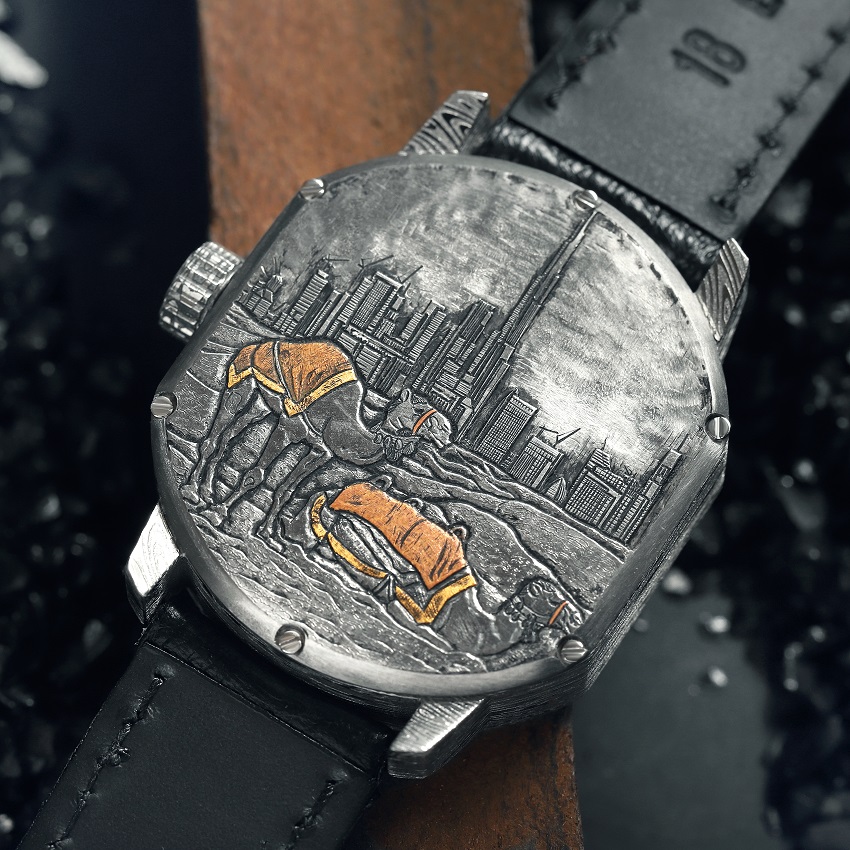
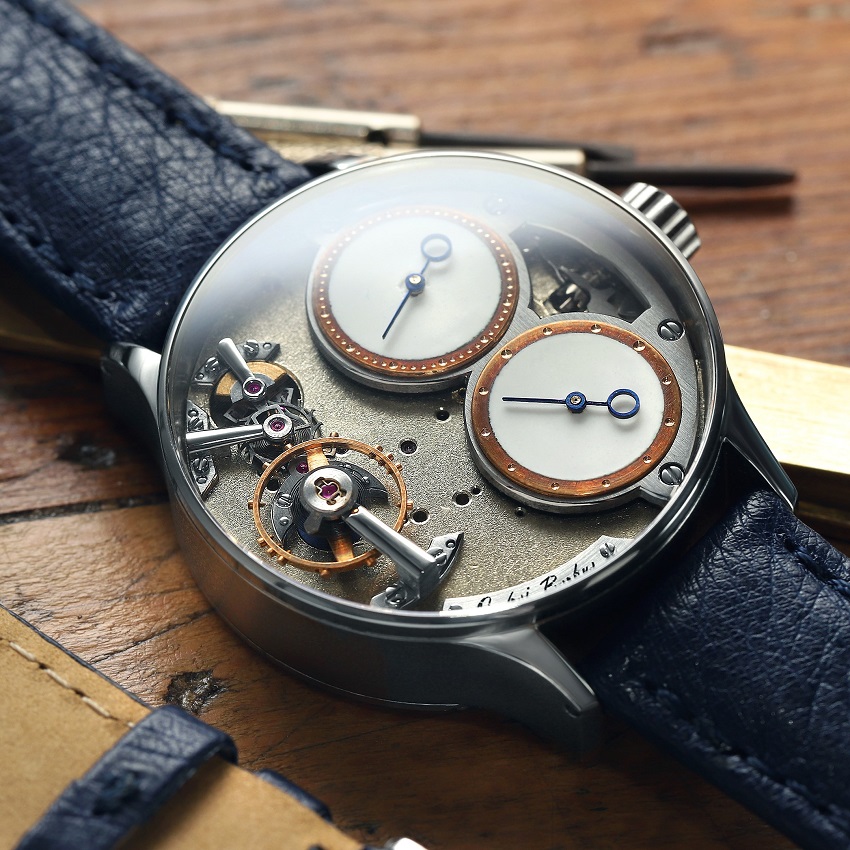

WA: I think that kind of personal touch is a huge part of why there has been an enormous rise in interest in independent watchmaking over the past few years, which has been wonderful to see. How has this impacted you – has it made things easier, more difficult, or both?
OB: It’s kind of both.
In part it is difficult because for clients who will have been waiting for 10 or 15 years when they get their watch, I put a pressure on myself because I think that when they get that watch, it had better be perfect. I think what I do is good, but give me another 10 years of learning, and I will hopefully be where I want to be. I learned in Switzerland that a lot of this comes from attitude and self-discipline, not just hand skills, so I need to be patient with myself and meticulous with every detail.
The good thing though is that I’m not worried about making ends meet financially. I’m not going to be rich, but I’m relaxed, and that has taken a lot of pressure off me. I have a waiting list until 2040, and clients jumping at every chance – I recently had a watch that the client couldn’t take delivery of because, well, real life happens to all of us. So, I put it on Instagram, and it was gone in 10 minutes! I still can’t believe it. I’m finishing the watch and I’ll be delivering it in November. But things like this keeps me relaxed because the pressure is gone, I just have to not go crazy and buy a Lamborghini!
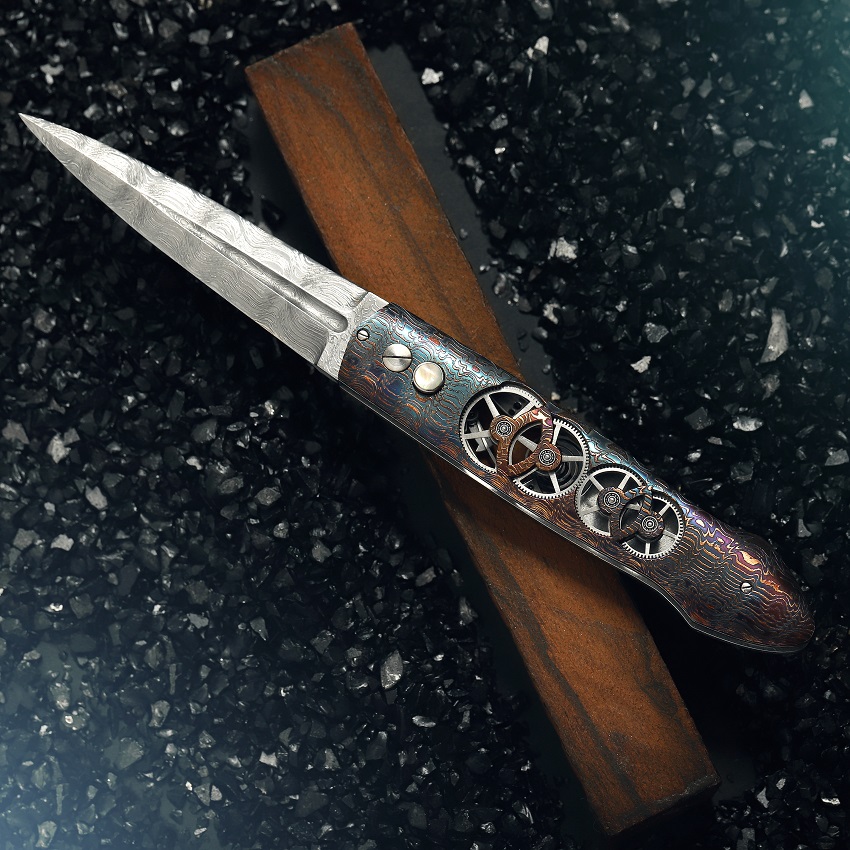

WA: We touched on knives, but you make things other than watches as well – you actually made my wedding ring! What other non-watch products do you make, and how do you manage to fit this into your day around making watches?
OB: I make knives, rings, and we also started making fountain pens. My cousin took over making the fountain pens under his own name, and I refer clients coming to me on to him.
We make the rings and pens because we have a zero-scrap policy. The rings are an excellent way to use the scrap piece of material that comes from inside the watch case, after the blank is cut. You can’t make a watch out of them, so we make rings – why not!
It’s all a great way to get the brain to relax, to not have to solve so many complex problems as with watchmaking. You can relax, but you’re still being productive in the shop making something.
WA: Finally, if you could share one piece of advice you learned with an aspiring young watchmaker, what would you say?
OB: I think I’ve said it already – but never give up. And as a client of mine in the US said, don’t “Swiss up”.
Being the boss is always more difficult, but a lot more rewarding than being an employee. I tell everybody around me figure out a way to be a boss and not an employee. When you’re an employee, you’re just working for someone else.
WA: Thank you very much for speaking with me!
OB: No problem, thank you!
To learn more about Ondřej Berkus, be sure to follow Ondřej on Instagram.
Share your thoughts with us via our Contact page, or via our Instagram
Don’t forget to check out the Interviews Page for more!
You might also be interested in:
- Independent Watchmaking – An Ode to the Indies
- Watch Finishing Techniques
- Value for Money in Independent Watchmaking – Part 1
- Watch Stationery and Gift Ideas
- Watch Books, Watch Boxes and more at the Watch Affinity Shop on Amazon (commissions earned)
As an Amazon Associate, I earn from qualifying purchases – thank you for your support

